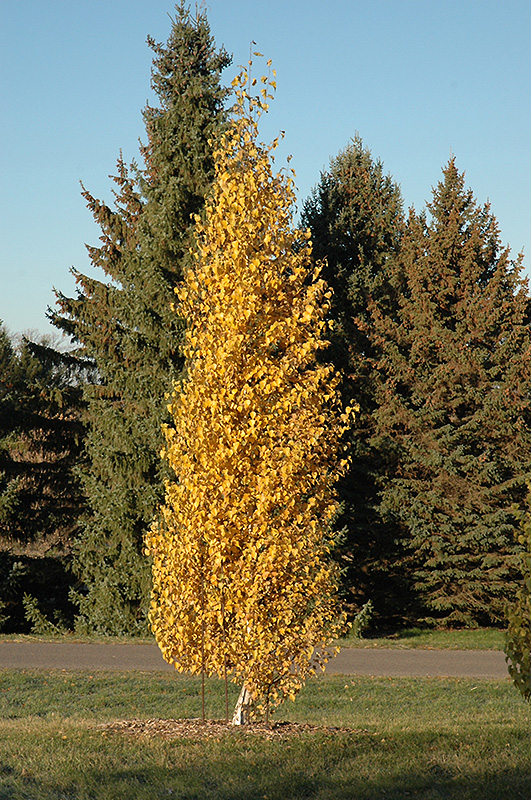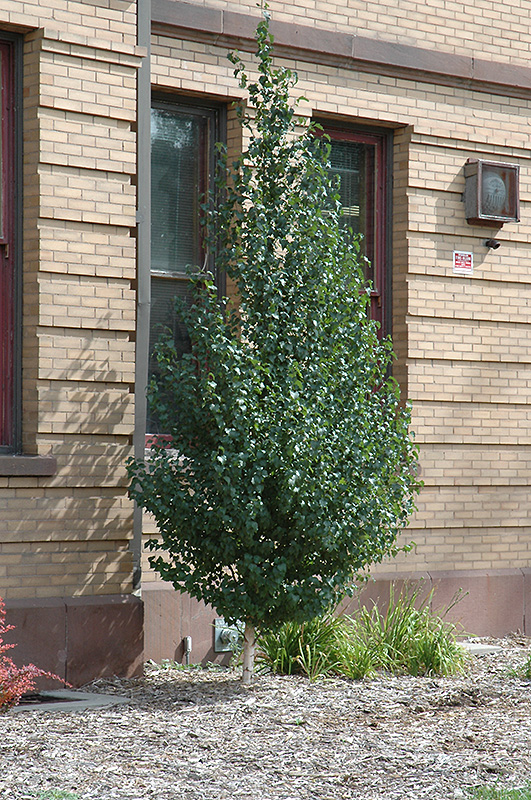Birch (Japanese White), Dakota Pinnacle Betula platyphylla 'Fargo' Height: 60 feet Spread: 40 feet
Sunlight:
Hardiness Zone: 3b Description: A fantastic new introduction from North Dakota that's hardier than the species; smooth white bark, spire-like columnar habit of growth, quite dense, great for skyline articulation; insect resistant and handles dryer conditions. Ornamental Features Birch (Japanese White), Dakota Pinnacle is primarily valued in the landscape for its rigidly columnar form. It has dark green deciduous foliage. The pointy leaves turn yellow in fall. The smooth white bark is extremely showy and adds significant winter interest. Landscape Attributes Birch (Japanese White), Dakota Pinnacle is a dense deciduous tree with a strong central leader and a narrowly upright and columnar growth habit. Its relatively fine texture sets it apart from other landscape plants with less refined foliage. This is a relatively low maintenance tree, and should only be pruned in summer after the leaves have fully developed, as it may 'bleed' sap if pruned in late winter or early spring. It has no significant negative characteristics. Birch (Japanese White), Dakota Pinnacle is recommended for the following landscape applications; Planting & Growing Birch (Japanese White), Dakota Pinnacle will grow to be about 60 feet tall at maturity, with a spread of 40 feet. It has a high canopy of foliage that sits well above the ground, and should not be planted underneath power lines. As it matures, the lower branches of this tree can be strategically removed to create a high enough canopy to support unobstructed human traffic underneath. It grows at a medium rate, and under ideal conditions can be expected to live for 40 years or more. This tree does best in full sun to partial shade. It prefers to grow in average to moist conditions, and shouldn't be allowed to dry out. This plant should be periodically fertilized throughout the active growing season with a specially-formulated acidic fertilizer. It is not particular as to soil type or pH. It is highly tolerant of urban pollution and will even thrive in inner city environments. This is a selected variety of a species not originally from North America. Special Attributes Early Spring 1 1/2 to 2 inch catkins appear and releases tiny seeds during summer and fall. River Birch are more resistant to the Birch Borer.![]()
![]()
![]()
![]()
![]()
![]()
![]()
![]()
![]()
![]()
![]()


